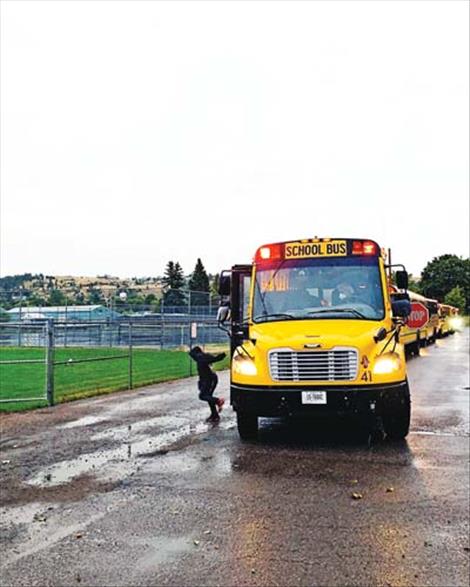Polson schools shift to four-day, in-school model
Hey savvy news reader! Thanks for choosing local.
You are now reading
1 of 3 free articles.
POLSON — After just over a month of hybrid learning, Polson School District is shifting to four days of in-school instruction and one day of remote learning on Oct. 5.
According to Interim Superintendent Tom DiGiallonardo, the current hybrid plan “was a good model to transition back, but we sacrificed student contact time for safety protocol.”
“From day one our goal was just to use the hybrid to transition and return to the full-time model around Oct. 1,” he adds.
Since schools reopened in late August, students with last names beginning A-K attend school Mondays and Tuesdays, while students with last names starting with L-Z are in school Wednesdays and Thursdays. Friday is reserved for teachers to prepare lessons for the 20 percent of the student body who are remote learners.
In deciding to return students to school four days a week, DiGiallonardo says the administrative team consulted with the school board, staff, parents, and Lake County and tribal health
departments. “These decisions were made with a lot of input,” he adds.
The district received 609 responses to a family survey sent out earlier this month. Of those results, most parents supported a return to a more full-time model, ranging from a high of 77 percent for Cherry Valley respondees, to 62 percent in the high school.
As a parent himself, DiGiallonardo says he’s not surprised a majority of parents want their kids back in school on a more full-time basis. “It’s really difficult trying to meet their educational needs and be their parent as well.”
Teachers, he adds, are split “about 50-50” between continuing the hybrid model and resuming a more conventional schedule.
By bringing students back to school in smaller numbers and on alternative days, teachers had an opportunity to teach safety protocol – including hand washing, social distancing, and mask wearing – and reconnect more intimately with their students, most of whom hadn’t seen the inside of a classroom since last March.
But the hybrid is also “a heavy lift for teachers, who basically have three different groups, and are juggling three jobs right now,” DiGiallonardo says. “It’s just not sustainable.”
Remote learning, even augmented by two days of in-person teaching, is especially problematic for K-5 students. “Teaching children to read is a really difficult task in person,” says DiGiallonardo. “That’s magnified by remote learning.”
Under the new schedule, Fridays are set aside for teachers to collaborate, prepare video lessons and other forms of online instruction, and connect with the 338 students who currently learn at home.
The superintendent is uncertain how those families will respond to the new schedule. “It’s a mixed bag – some will remain remote through the first quarter, some will remain remote for the entire year, and some will wait and see what happens,” he says.
“The key for the staff, the district and the community is flexibility, so families can be comfortable with whatever they choose.”
Because 20 percent of the student body is learning remotely, the district hopes to keep desks 3-6 feet apart in most classrooms, although maintaining that distance in the lunchrooms could prove challenging.
“We’ve really upped our game” on two other key factors in limiting the spread of COVID-19 – wearing a mask and washing hands – says DiGiallonardo. In addition, “our cleaning protocol is significantly more in depth for classrooms, busses and common areas – more than I’ve ever seen in my 30-plus years in education.”
Although cooler weather is arriving, he expects that students can still take short breaks outside, and teachers will keep their windows cracked open for better air circulation. Even with plenty of planning and precautions, the superintendent anticipates that the coronavirus will again find its way into Polson schools (a food service employee was infected this summer).
“We’re continuing to prepare for when that does happen,” he said, with a protocol that calls for quarantine and contact tracing, led by the county health department, school nurses and administrators.
He noted that schools from Arlee to Kalispell are all on a full-time schedule, varying from four to five days a week.
As a first-year superintendent (he’s previously served the district in various roles, including as curriculum director, middle school principal, teacher and coach), DiGiallonardo is grateful for the communication between area school districts during such an uncertain time.
“I’m really impressed with how well we network up and down the valley,” he said. “We can all learn from each other and share.”

















